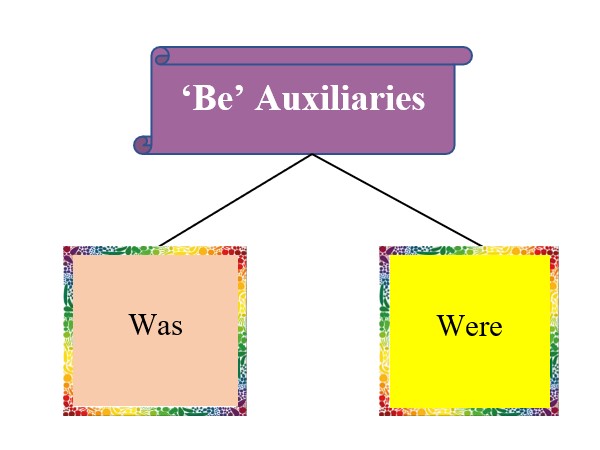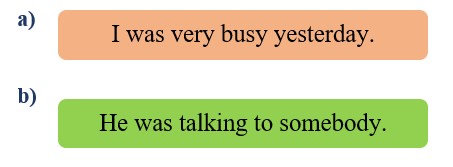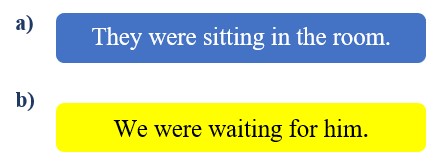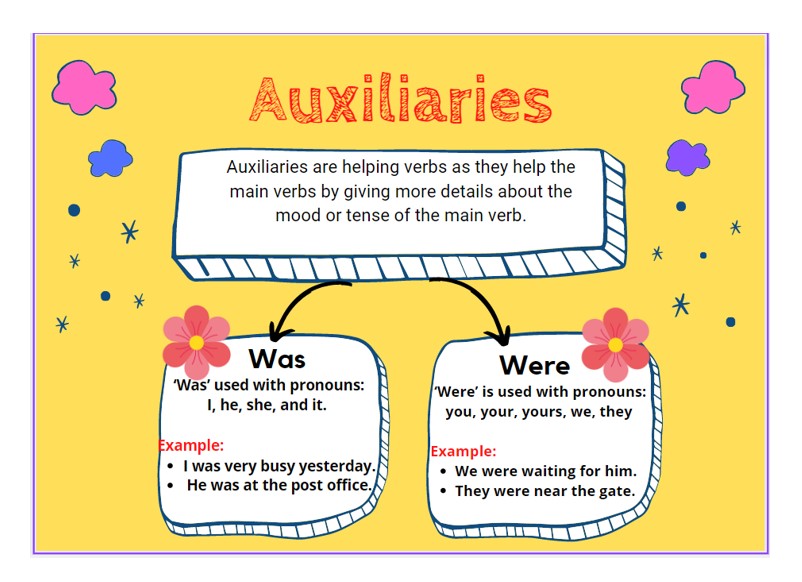Auxiliary : Uses of Was and Were for Class 2 English
In this concept, the student will learn about the uses of was and were in sentences. Students will also discover their definition, auxiliary verb examples and exceptions while using them.
In this learning concept, the students will learn:
- Usage of was and were.
- Identify primary auxiliary verb.
Each concept is explained to class 2 English students using examples, illustrations, and concept maps. After you go through a concept, assess your learning by solving the two printable worksheets given at the end of the page.
Download the worksheets and check your answers with the worksheet solutions for the concept uses of was and were provided in PDF format.
Definition
- Auxiliary is a helping verb as it helps another verb by giving more details about the mood or tense of the main verb.
- Auxiliaries are divided into two sections: primary auxiliaries and modal auxiliaries.
- Now, primary auxiliaries are further sub-divided into three parts: be, have, and do.
- ‘Was’ and ‘Were’ fall under the category of ‘be’ auxiliaries.
Today, we will learn about ‘was’ and ‘were’ auxiliaries.

Let’s Learn About Uses of Was and Were!
- ‘Was’ and ‘Were’ are the past form of the verb ‘be’.
- One of the most common roles of these verbs is to express tense.
- The tense means the time when the event took place. The tense depends on the time when the statement is spoken.
- The auxiliary ‘was’ and ‘were’ are auxiliary verbs that talk about one or more nouns in the past.
a. Was
The auxiliary ‘was’ is used with singular pronouns like I, he, she, and it.
Examples:

b. Were
‘Were’ is used with both singular and plural pronouns like you, your, yours, we, and they.
Examples:

Exceptions
Usually, ‘was’ is for singular objects and ‘were’ is used for plural objects. But with the pronoun ‘you’, always use ‘were’ even though it is singular.
Examples:



